Archives
- By thread 5224
-
By date
- June 2021 10
- July 2021 6
- August 2021 20
- September 2021 21
- October 2021 48
- November 2021 40
- December 2021 23
- January 2022 46
- February 2022 80
- March 2022 109
- April 2022 100
- May 2022 97
- June 2022 105
- July 2022 82
- August 2022 95
- September 2022 103
- October 2022 117
- November 2022 115
- December 2022 102
- January 2023 88
- February 2023 90
- March 2023 116
- April 2023 97
- May 2023 159
- June 2023 145
- July 2023 120
- August 2023 90
- September 2023 102
- October 2023 106
- November 2023 100
- December 2023 74
- January 2024 75
- February 2024 75
- March 2024 78
- April 2024 74
- May 2024 108
- June 2024 98
- July 2024 116
- August 2024 134
- September 2024 130
- October 2024 141
- November 2024 171
- December 2024 115
- January 2025 216
- February 2025 140
- March 2025 220
- April 2025 233
- May 2025 239
- June 2025 303
- July 2025 36
-
Women in healthcare and life sciences: The ongoing stress of COVID-19
the Daily read
Understand the challenges .
Share this email 



AN ARTICLE A DAY, PICKED BY OUR EDITORS 
Women have made great strides and are comparatively well represented in healthcare and life sciences. But in the wake of the pandemic, unmanageable workloads and increased home responsibilities are taking a toll, and many are leaving the workforce altogether. This could potentially set back the progress women have made in healthcare by several years and hinder efforts to reach gender parity in senior-level positions. A new article examines these ongoing challenges and suggests three actions to retain and promote women in the industry. Explore what needs to be done to rebalance the scales. — Katherine Tam, digital editor, New York 
Women in healthcare and life sciences: The ongoing stress of COVID-19 The healthcare sector is examining how to better hire and promote women to the highest levels. Understand the challenges 

Quote of the Day —Get smart about how fashion companies can optimize both offline and online channels in “Mastering off-price fashion in an omnichannel world” 
Chart of the Day 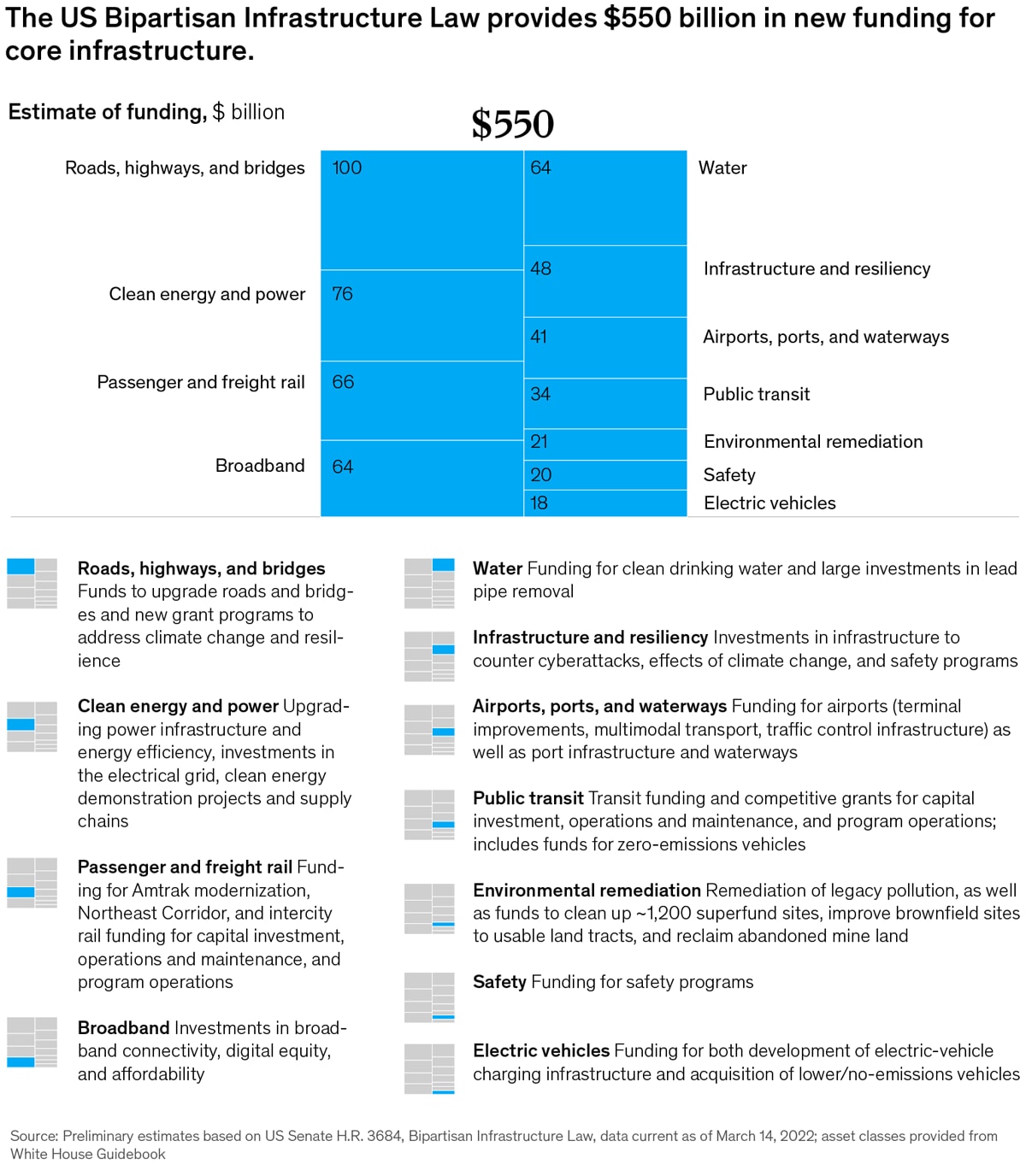
See today’s chart 
Also New 

Risk transformations: The heart, the art, and the science Successful large-scale risk transformation requires a combination of heart, art, and science to keep the momentum and deliver sustainable outcomes. Make meaningful change 


Author Talks: Get on the performance curve By taking pause to assess our default responses, Dr. Laura Watkins says we can take new problem-solving avenues that build our capacity to handle change and complexity. Ditch boom-and-bust 


Japan’s design imperative Japanese companies want to revamp their innovation engines and reconnect with their customers. Good design will help. Four themes for maximizing value 


Follow our thinking 



Share these insights Did you enjoy this newsletter? Forward it to colleagues and friends so they can subscribe too.
Was this issue forwarded to you? Sign up for it and sample our 40+ other free email subscriptions here.This email contains information about McKinsey’s research, insights, services, or events. By opening our emails or clicking on links, you agree to our use of cookies and web tracking technology. For more information on how we use and protect your information, please review our privacy policy. You received this email because you subscribed to the Daily Read newsletter. Manage subscriptions | Unsubscribe Copyright © 2022 | McKinsey & Company, 3 World Trade Center, 175 Greenwich Street, New York, NY 10007
by "McKinsey Daily Read" <publishing@email.mckinsey.com> - 06:17 - 12 Apr 2022 -
Do you know why your workers are leaving?
McKinsey Quarterly
Learn what employees want .
Winning back your workers Employees left the workforce in record numbers last year, and many are staying away. Companies need to rethink how to win them back. 
Get your briefing 
People are feeling tired and purposeless and are leaving their jobs—many without another in hand. 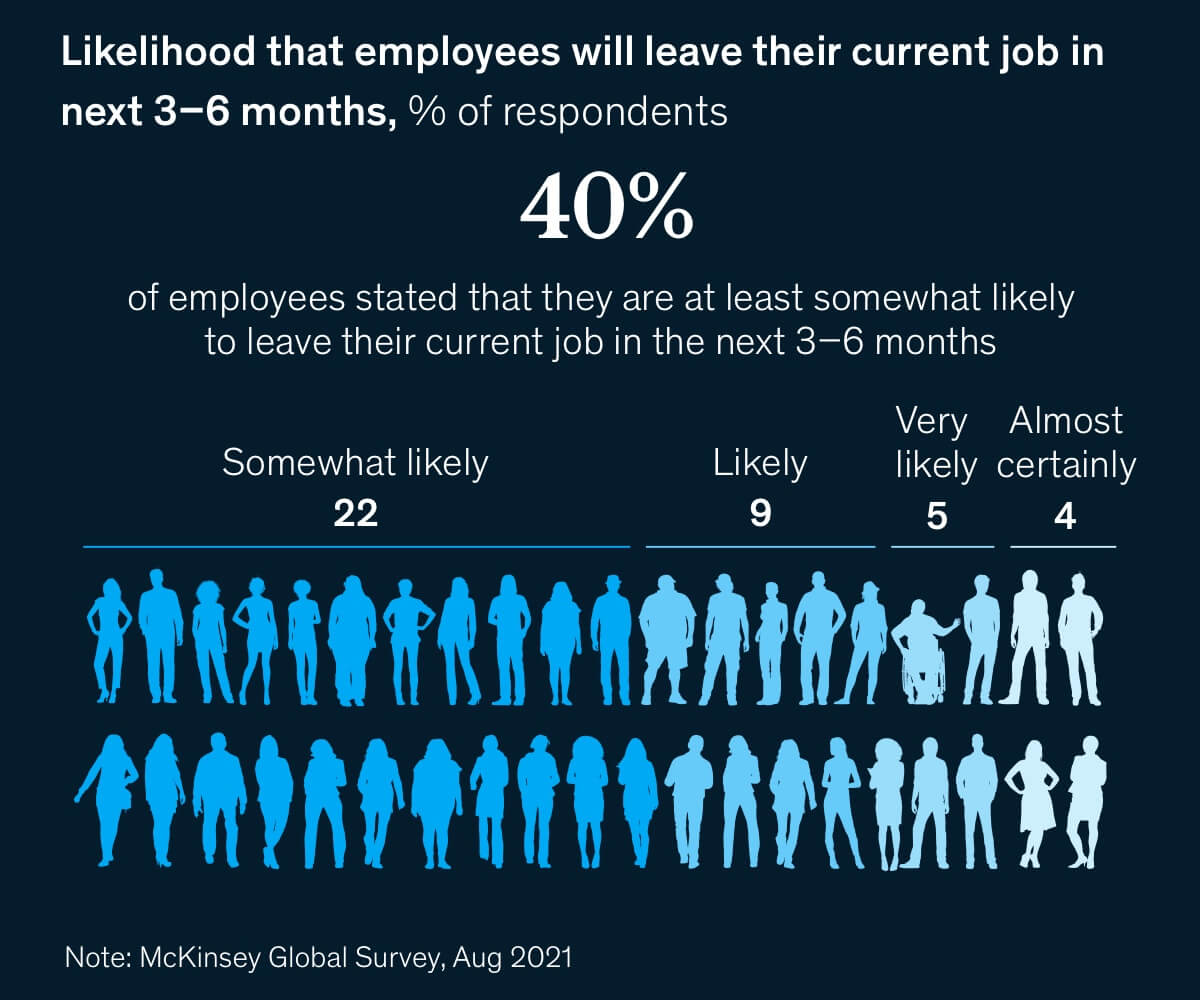

Get your workers back 


Follow our thinking 



Share these insights Did you enjoy this newsletter? Forward it to colleagues and friends so they can subscribe too.
Was this issue forwarded to you? Sign up for it and sample our 40+ other free email subscriptions here.This email contains information about McKinsey’s research, insights, services, or events. By opening our emails or clicking on links, you agree to our use of cookies and web tracking technology. For more information on how we use and protect your information, please review our privacy policy. You received this email because you subscribed to our McKinsey Quarterly Five Fifty alert list. Manage subscriptions | Unsubscribe Copyright © 2022 | McKinsey & Company, 3 World Trade Center, 175 Greenwich Street, New York, NY 10007
by "McKinsey Quarterly Five Fifty" <publishing@email.mckinsey.com> - 02:11 - 12 Apr 2022 -
Whose fault is it anyway? Debugging distributed systems.
It’s frustrating trying to figure out performance issues throughout your distributed system. Nobody wants to spend hours digging through your logs, only to later find out that it was an external service causing the issue.
Distributed tracing does this by showing you the path a software request follows as it travels through your system, making troubleshooting easier—and a lot faster.
If you haven’t already, enabling distributed tracing is as simple as installing the New Relic One agent for your preferred language.
Follow the instructions to instantly install and configure your agent so you can spend less time debugging, and more time building.
Happy Monitoring,
Max
For any additional onboarding questions, please visit our community support.New Relic
188 Spear Street, San Francisco, CA 94105 US
by "Max from New Relic" <max.francisco@newrelic.com> - 12:02 - 12 Apr 2022 -
Nurture Data-Driven Decision Making With Augmented Analytics: Your order confirmation
Order success
Your ticket order for
Nurture Data-Driven Decision Making With Augmented Analytics
Apr 20, 2022, 02:00 PM(SGT)
has been confirmed!
Log in below to manage your order at anytime.
You can view, download, and reassign tickets online.
Pay us a visit If the above button doesn't work, copy the link below and paste it into your browser.
https://zohoevents.zohobackstage.com/NurtureData-DrivenDecisionMakingWithAugmentedAnalytics
Order details
Order ID 721000066302006 Ticket ID 7210000663020061 - Abul KhayerPurchaser's name Abul Khayer Purchaser's email address info@learn.odoo.com Purchased on Apr 12, 2022 - 03:25 PM(SGT) Order summary
Ticket details Quantity Complimentary 1 Powered by Zoho Backstage
by "Online Events APAC" <onlineevents-apac@zohocorp.com> - 03:25 - 12 Apr 2022 -
Welcome to Nurture Data-Driven Decision Making With Augmented Analytics!
Hello there
Welcome to
Nurture Data-Driven Decision Making With Augmented Analytics
Apr 20, 2022, 02:00 PM (SGT)
Get important information about the event,
personalize your agenda, and more.Click the magic link to sign in to the event.
This link can be used once and will expire in 1 day.Sign in to event If the above button doesn't work, copy the link below and paste it into your browser.
Ticket details
Ticket ID 7210000663020061Order ID 721000066302006 Attendee's name Abul Khayer Attendee's email address info@learn.odoo.com Purchaser's name Abul Khayer Purchaser's email address info@learn.odoo.com Purchased on Apr 12, 2022 - 03:25 PM(SGT) If it's been a while since you looked at this email, please sign in again.



An exciting agenda
Learn moreAn interesting lineup of speakers
Learn moreHow to get to the event?
Learn morePowered by Zoho Backstage
by "Online Events APAC" <onlineevents-apac@zohocorp.com> - 03:25 - 12 Apr 2022 -
The employer–employee relationship is changing. Which workers have more power?
McKinsey&Company
How expectations are changing .

Power to the people In the news • Rethinking the 9-to-5. A majority of independent workers in the US—70%—now believe independent work to be more secure than a traditional, full-time job, according to a 2021 survey. The COVID-19 crisis has led workers to rethink their work lives. At the same time, expanded unemployment assistance, a wave of early retirements, and a shortage of childcare options have limited the pool of available workers. Since workers have more power to hold out for the jobs they want, employers should consider offering employees greater autonomy and flexibility. [HBR] • Fatter paychecks. The US labor market is continuing to heat up, with wages increasing briskly in January through March as employers offer bigger paychecks to lure a limited number of workers. Wages climbed by 5.6% from the prior year, leaping over the 2 to 3% annual gains of the 2010s. Meanwhile, the unemployment rate slipped to 3.6% in March from 3.8% the previous month. The most dramatic pay increases have been in leisure and hospitality, where workers in nonmanagerial roles have seen wages shoot up nearly 15% over the past year. [NYT] 
“The worst thing employers can do is come out with a mandate, whether it’s the five-day return to how it was or the dressed-up four-day mandate.” 
On McKinsey.com • The power to walk. In this tight labor market, workers are flexing the power to walk away from jobs they don’t want—and most of them haven’t come back, say talent experts Bryan Hancock and Bill Schaninger in an episode of McKinsey Talks Talent. Of the folks who have quit their jobs, only a third are returning to full-time employment, McKinsey research shows. “Maybe that’s the real power. They aren’t going back. And the employers have to decide whether or not they like the new terms,” says Schaninger. • Pockets of power. “We are seeing some increased worker power in some pockets,” says Hancock. How much power depends upon the type of employment. Knowledge workers who work remotely can access a nationwide labor market, but folks who serve customers or handle equipment often face very local labor markets. In addition, some gig economy workers are finding that although work platforms are evolving, they haven’t met all of their needs. Listen to the full podcast for more on the changing employer–employee relationship. — Edited by Belinda Yu Reframe the relationship 
Was this forwarded to you? Sign up here. Or send us feedback — we’d love to hear from you. 

Follow our thinking 


This email contains information about McKinsey’s research, insights, services, or events. By opening our emails or clicking on links, you agree to our use of cookies and web tracking technology. For more information on how we use and protect your information, please review our privacy policy. You received this email because you subscribed to the On Point newsletter. Manage subscriptions | Unsubscribe Copyright © 2022 | McKinsey & Company, 3 World Trade Center, 175 Greenwich Street, New York, NY 10007
by "McKinsey On Point" <publishing@email.mckinsey.com> - 12:12 - 12 Apr 2022 -
The changing role of CFOs
the Daily read
Understand changing responsibilities .
Share this email 



AN ARTICLE A DAY, PICKED BY OUR EDITORS 
The role of CFOs is changing—and at an accelerated pace. Amidst persistent economic uncertainty and increased digitization, today’s finance leaders face many new challenges and a growing scope of responsibilities. “This time of change represents an opportunity for the CFO to have disproportionate impact, becoming almost a copilot of the business with the CEO,” says McKinsey partner Ankur Agrawal in a new article that explores how the role is transforming and expanding. Check it out to get up to speed. — Babi Oloko, digital editor, New York 
In conversation: The new CFO mandate How finance leaders can reconcile and fulfill their growing portfolios of responsibilities. Understand changing responsibilities 

Quote of the Day “Being on a performance curve is not about being happy or about being comfortable. It’s actually sometimes about being uncomfortable because we ask ourselves those challenging questions, but the idea is that over time it will become a more fulfilling place to be.” —Laura Watkins, cofounder of Cognitas Group, on the benefits of the performance curve in a recent Author Talks interview 
Chart of the Day 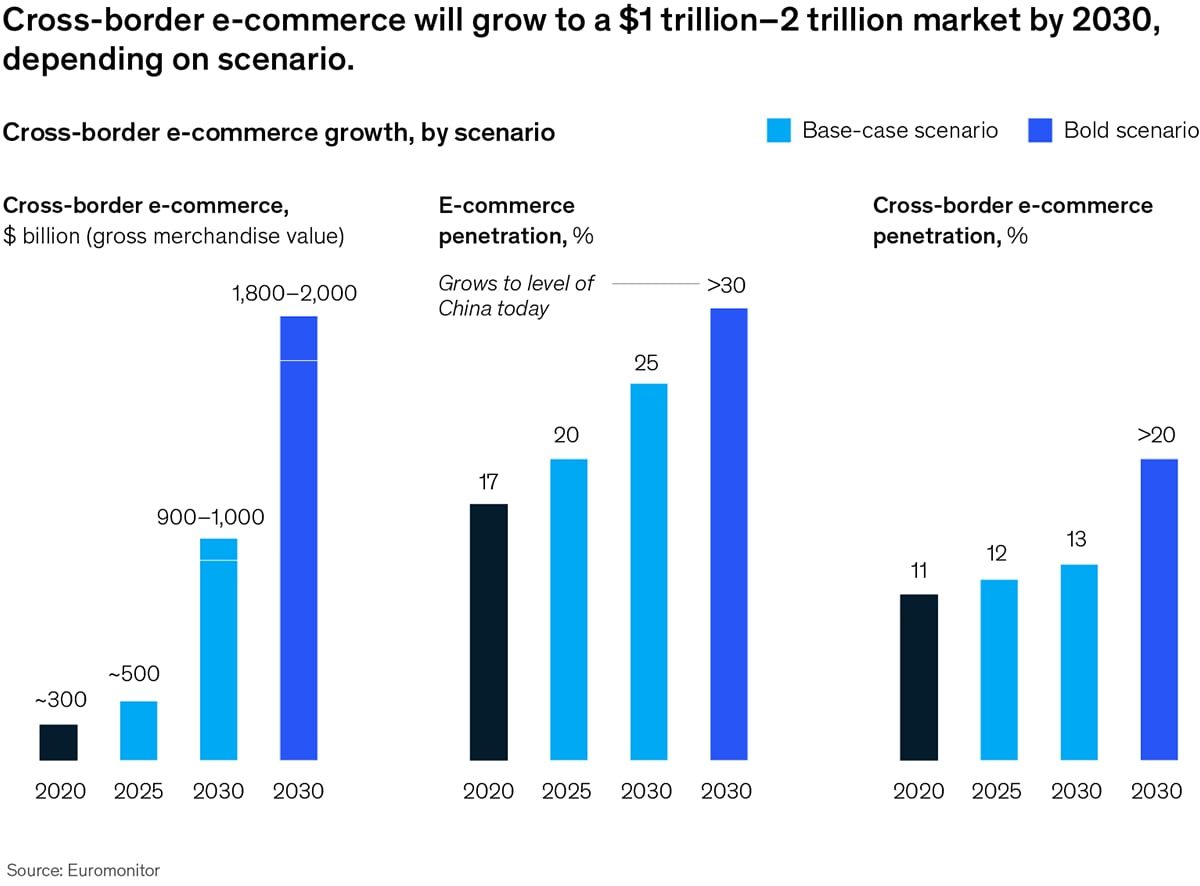
See today’s chart 
Also New 

You're invited: Join us for a webinar on creating an inclusive environment for transgender employees More than half of transgender employees say they are not comfortable being out at work. They report experiencing systemic barriers to employment, performance, and advancement. What can employers do to change this narrative? Register now 


How the fashion industry can get into a metaverse mindset Shoppers, particularly those in Gen Z, are spending more time online and exploring the possibilities of the metaverse. Here’s what fashion and luxury players need to know about this emerging frontier. Discover digital landscapes 


Using machine learning to improve student success in higher education Deploying machine learning and advanced analytics thoughtfully and to their full potential may support improvements in student access, success, and the overall student experience. Understand digital advancements 


Follow our thinking 



Share these insights Did you enjoy this newsletter? Forward it to colleagues and friends so they can subscribe too.
Was this issue forwarded to you? Sign up for it and sample our 40+ other free email subscriptions here.This email contains information about McKinsey’s research, insights, services, or events. By opening our emails or clicking on links, you agree to our use of cookies and web tracking technology. For more information on how we use and protect your information, please review our privacy policy. You received this email because you subscribed to the Daily Read newsletter. Manage subscriptions | Unsubscribe Copyright © 2022 | McKinsey & Company, 3 World Trade Center, 175 Greenwich Street, New York, NY 10007
by "McKinsey Daily Read" <publishing@email.mckinsey.com> - 06:36 - 11 Apr 2022 -
Can this collaboration be saved? Here's a guide for leaders.
Leading Off
Joint effort .
Share this email 



ESSENTIALS FOR LEADERS AND THOSE THEY LEAD 
Collaborative work has become all consuming. The time that most people spend on meetings, emails, messaging, and phone calls accounts for 85 percent or more of their workweeks, and since the COVID-19 pandemic began, collaboration demands have only increased. Collaboration—whether it is between individuals or among teams or business units—can take an organization from good to great, but when done without care, it can derail projects and exhaust the participants. This week, let’s explore ways to collaborate better, as well as some habits of collaboration that may undermine performance. AN IDEA 
Be strategic and intentional in identifying collaborators “Why am I in this meeting?” We’ve all asked ourselves this question when we’ve felt that we had little or nothing to contribute to a meeting’s agenda. Diverse perspectives are indeed valuable, but you should resist the temptation to corral every available expert to staff your next project. Be selective when picking collaborators, looking for complementary skills and depth of knowledge that can be applied directly to the problem at hand. “This intentionality helps ensure that inefficient collaboration does not stymie innovation and productivity,” says McKinsey’s Stephanie Spangler. “Being intentional about when to collaborate and what projects you say ‘yes’ to also could help avoid the strain of collaboration overload.” To make the most of your collaborators’ expertise, provide immediate feedback on their contributions rather than waiting until the end of the project to debrief the team. 
A BIG NUMBER 30 That’s the percentage of extra time it takes to complete tasks if you’re doing them in parallel—and for heavy multitaskers, it may take even longer than that. Switching back and forth among tasks damages productivity: our brains are wired to work best when focusing on one thing at a time. The same principle applies to collaborating with people. Research shows that individuals are most creative when focusing on one activity most of the day and collaborating with just one other person. Fragmented and frantic days packed with activities, meetings, and group discussions can hamper creativity. It may not be possible to eliminate these distractions entirely, but consider redesigning working norms to assign and manage collaborative work more thoughtfully. 

A QUOTE “It is possible to have too much of a good thing.” That’s the ancient Greek storyteller Aesop warning us of the dangers of too much sunshine in his fable “The marriage of the sun.” In our own era, the dangers of too much collaboration are all too apparent. Virtual-interaction technology gives us the ability to connect constantly, but, ironically, the onslaught of meetings, emails, and texts often doesn’t lead to productive collaboration. To achieve high-quality, focused interactions, leaders can focus on three broad categories of collaboration: decision making, creative solutions and coordination, and information sharing. Getting these right will require corrective action, such as clarifying who makes decisions (ideally, just one person), empowering employees to come up with innovative solutions, and—you guessed it—reducing the number of meetings and their attendees. Treat meeting time as a precious commodity and take it as seriously as you would financial capital. 
A SPOTLIGHT INTERVIEW 
If you suffer from collaboration overload, take heart: it is possible to collaborate effectively. So much more effectively, in fact, that you can claw back 18 to 24 percent of your time, says Rob Cross, Edward A. Madden Professor of Global Leadership at Babson College, in this McKinsey Author Talks interview. But he warns that there isn’t a “single, seductive principle” to follow: “This is more of a brawl than a ballet.” That means setting norms around collaboration, whether it involves allocating time strategically, energizing and engaging people, or networking purposefully. The best collaborators are “seeding relationships and developing an understanding of how they could work together with others,” says Cross. “Then when the opportunity comes by, their response is much greater than those of people who don’t do this. So they’re able to mobilize resources that produce a bigger outcome.” 
SIX DEGREES OF SEPARATION 
There are many reasons collaborations fail, but a common one is that leaders neglect to set up the conditions needed to support collaboration, relying instead on conventional solutions to fix collaborations when they break down. Research by Babson College professor Rob Cross and coauthor Inga Carboni outlines six patterns of collaborative dysfunction that can harm performance. Examples include hub-and-spoke networks, where leaders micromanage or make all decisions on their own, and disenfranchised nodes, in which groups and team members are isolated from one another. And beware of overwhelmed nodes, in which excessive collaboration brings projects to a standstill. Lead collaboratively. — Edited by Rama Ramaswami, a senior editor in McKinsey’s Stamford office 

Follow our thinking 



Share these insights Did you enjoy this newsletter? Forward it to colleagues and friends so they can subscribe too.
Was this issue forwarded to you? Sign up for it and sample our 40+ other free email subscriptions here.This email contains information about McKinsey’s research, insights, services, or events. By opening our emails or clicking on links, you agree to our use of cookies and web tracking technology. For more information on how we use and protect your information, please review our privacy policy. You received this email because you subscribed to the Leading Off newsletter. Manage subscriptions | Unsubscribe Copyright © 2022 | McKinsey & Company, 3 World Trade Center, 175 Greenwich Street, New York, NY 10007
by "McKinsey Leading Off" <publishing@email.mckinsey.com> - 03:34 - 11 Apr 2022 -
What will your avatar wear today? The metaverse is set to change the way we work.
McKinsey&Company
Master the metaverse .

Meet me in the metaverse In the news • Dress (your avatar) for success. Our work lives will change dramatically in the new virtual world known as the metaverse. To participate in a virtual job interview, for instance, you’ll need to have appropriate attire for your avatar. The metaverse could intensify competition for jobs and increase turnover: since employees in the digital realm can work from any location, both job hunters and recruiters will have more options. As companies establish a presence in the metaverse, they’ll also create new jobs. [WSJ] • Ahoy there, workmate. Why not work from a pirate ship or a space station? In the metaverse, you can. Three-dimensional, virtual worlds are set to transform the way we work, bringing new interactive, collaborative experiences that remote workers crave. For instance, in the virtual workplace, colleagues’ avatars can walk into conference rooms in real time, kick back in a lounge, and bump into each other and say hello. If they want to take a break, workers can do so in digital spaces set aside for well-being (like a virtual forest or aquarium). [HBR] 
“If you wait a year and a half or two years to do something, to have a clear metaverse strategy, and to start testing assumptions, it might be a little bit too late.” 
On McKinsey.com • Massive opportunities. The metaverse is where our physical and digital lives meet, and it’s already changing how companies do business, says Cathy Hackl in an episode of McKinsey’s new podcast, At the Edge. “There are massive opportunities to take new commerce models and do them at scale,” says Hackl, a futurist, metaverse expert, and author. For example, in a virtual-to-physical transaction, you could buy something in a virtual-reality environment that then shows up as a physical item delivered to your house. • Metaverse moments. “We’re seeing a lot of glimpses of the metaverse, or what I call metaverse moments,” Hackl says. Companies have the chance to “reimagine” themselves in the metaverse right now: “What is the extension of who you are?” They’ll also need to come up with new metrics—beyond likes, shares, and subscribers—to determine what success looks like for virtual experiences and communities. To learn three things leaders can do today to understand the potential opportunities in the metaverse, listen to the full podcast. — Edited by Belinda Yu Enter the metaverse 
Was this forwarded to you? Sign up here. Or send us feedback — we’d love to hear from you. 

Follow our thinking 


This email contains information about McKinsey’s research, insights, services, or events. By opening our emails or clicking on links, you agree to our use of cookies and web tracking technology. For more information on how we use and protect your information, please review our privacy policy. You received this email because you subscribed to the On Point newsletter. Manage subscriptions | Unsubscribe Copyright © 2022 | McKinsey & Company, 3 World Trade Center, 175 Greenwich Street, New York, NY 10007
by "McKinsey On Point" <publishing@email.mckinsey.com> - 10:10 - 10 Apr 2022 -
Be in the know with the top McKinsey podcast episodes
McKinsey&Company
Listen in .
Share this email 



New from McKinsey & Company Stay current with top episodes from McKinsey podcasts Are you tired of looking at a screen but still want to stay up to date on the latest McKinsey insights on business, management, technology, and talent? Then tune into our collection of podcasts including The McKinsey Podcast, McKinsey Talks Talent, Forward Thinking, Inside the Strategy Room, McKinsey on Consumer & Retail, and more. And be sure to subscribe on your preferred podcast platform such as Apple Podcasts, Google Podcasts, Spotify, and Stitcher so you never miss an episode. Read more The McKinsey Podcast 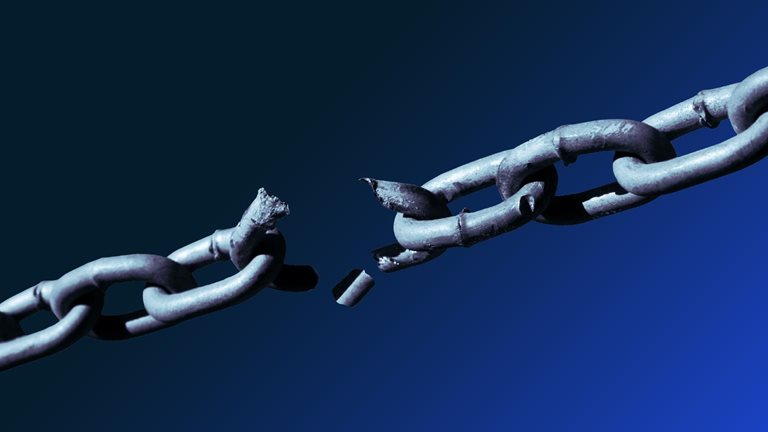

The rising toll of the war in Ukraine Lives lost and upended. Soaring food and energy prices. Supply chains at risk. Much is at stake as the war continues. Understand the crisis 


The state of burnout for women in the workplace Women are doing more to support employee well-being but face higher stress levels as a result. Here’s how leaders can help. Listen up 


IoT comes of age McKinsey research shows that adoption of IoT technologies has increased exponentially the past five years—but successful implementation still eludes some. Here’s how to get it right. Connect physical and digital worlds 
Inside the Strategy Room 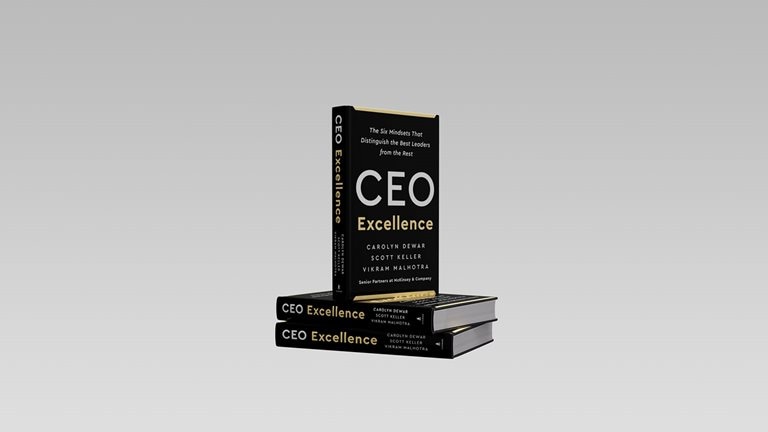

Leadership lessons from the world’s best CEOs The authors of the new book CEO Excellence, who interviewed dozens of the top-performing chief executives, share their most memorable encounters and stories. Get the scoop 


The role of ESG and purpose Answering three questions about purpose and environmental, social, and governance issues can help business leaders zero in on what matters most for their organizations. Pursue purpose 


Emphasizing the S in ESG How PayPal has made societal impact and purpose the guiding lights of its strategy. Prioritize social issues 
Forward Thinking 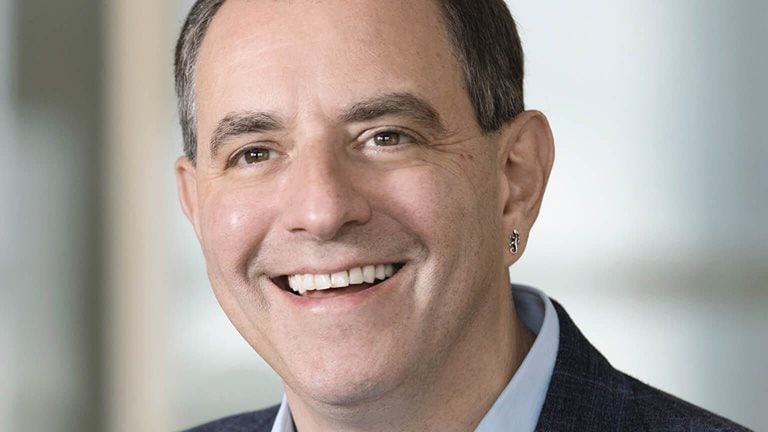

Pandemic paradoxes, labor market myths, and ‘cowboy capitalism’ with David Autor A leading US economist talks about what has changed in the pandemic, the rise of China, the globalization of trade, and spreading automation. Understand market trends 


Transformative role of intangible assets in companies and economies with Jonathan Haskel and Stian Westlake “William Blake talked about the dark Satanic mills, these inhuman pieces of tangible capital. Intangible capital is in some ways about what makes us human. It’s about ideas, and it’s about relationships. It’s about expressiveness. Some people may ask whether we should be making that the basis of the economy. But we would argue that this is actually making those things that matter to us as humans more central to our thriving.” Tune into the podcast 


The social contract in a postpandemic world with Minouche Shafik and Andrew Sheng “Our social contract is broken. And that is at the heart of why our politics is so divided and so many citizens around the world are disappointed and frustrated.” “Modern society is killing Mother Nature. And if you kill Mother Nature, you kill ourselves. We really need to achieve a social contract between us and other humanity and also Mother Nature. And this conversation is only beginning.” Two stark views on the state of today’s social contract. Tune in 
McKinsey on Consumer and Retail 

Creating good packaging for packaged goods The e-commerce boom, widespread concerns about sustainability, and the digitization trend are spurring innovation in the packaging industry. Many consumer products will soon be in packages that are stronger, sustainable, and smart. Leave a greener footprint 


Forecasting the future of stores Shoppers’ behaviors and expectations have changed dramatically—and continue to evolve. If retailers want to keep their physical stores relevant, here are five things they’ll need to get right. Look ahead 


Taking a good look at the beauty industry After a challenging year, beauty brands are bouncing back. The most successful ones offer a distinctive omnichannel customer experience while prioritizing sustainability and inclusivity. Understand the dynamics 
McKinsey Talks Talent 

Talent at a turning point: How people analytics can help Rising resignations. Hybrid work. The diversity imperative. Leaders are navigating a talent market in flux. Here’s how people analytics can help. Understand human potential 
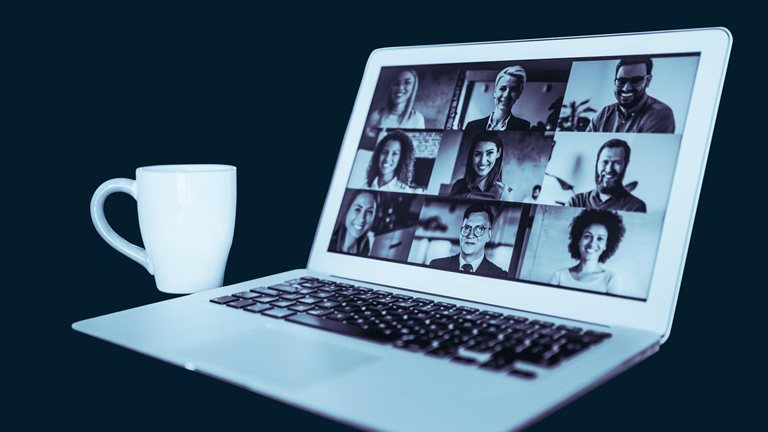

Back and forth: COVID-19’s impact on business in 2021—and today The years-long pandemic persists. How can companies continue to adapt? Think ahead 


Culture in the hybrid workplace Hybrid work is happening. Your culture will need to catch up—fast. Time for a radical rethink? 
EXPLORE MORE PODCASTS At the Edge McKinsey on Healthcare McKinsey on Start-ups The Venture Podcast McKinsey Talks Operations McKinsey on Government Future of America To see more essential reading on topics that matter, visit McKinsey Themes. — Curated by Joyce Yoo, a digital editor based in New York 

Follow our thinking 


McKinsey Insights - Get our latest
thinking on your iPhone, iPad, or Android


Share these insights Did you enjoy this newsletter? Forward it to colleagues and friends so they can subscribe too.
Was this issue forwarded to you? Sign up for it and sample our 40+ other free email subscriptions here.This email contains information about McKinsey’s research, insights, services, or events. By opening our emails or clicking on links, you agree to our use of cookies and web tracking technology. For more information on how we use and protect your information, please review our privacy policy. You received this email because you subscribed to our McKinsey Global Institute alert list. Manage subscriptions | Unsubscribe Copyright © 2022 | McKinsey & Company, 3 World Trade Center, 175 Greenwich Street, New York, NY 10007
by "McKinsey & Company" <publishing@email.mckinsey.com> - 05:17 - 10 Apr 2022 -
The globalization imperative
McKinsey&Company
A collection of insights on globalization: What’s at stake? .
Share this email 



New from McKinsey & Company The globalization imperative The global pandemic and Russia’s invasion of Ukraine have sparked a new debate on the viability of globalization. But an end to the system as we know it—which fosters interdependence of the world’s economies, people, and cultures—could have profound implications. Check out these insights from our archives to dive into the continued evolution of globalization and what might come next. Read more 

Forward Thinking on globalization and the evolving role of corporate leadership in the 21st century with Matthew Slaughter A leading economist and business school dean reflects on globalization, concluding that “we’ve learned people want to know policies will matter for them”, and that “a lot of us underestimated the possible magnitude of distribution pressures from freer trade and immigration and flows of capital.” Listen to the episode 


Globalization in transition: The future of trade and value chains Global value chains are being reshaped by rising demand and new industry capabilities in the developing world as well as a wave of new technologies. Understand the landscape 


Globalization’s next chapter Globalization isn’t in retreat, but it has morphed into a very different phenomenon, increasingly powered by trade in services and by intraregional trade. Explore the trends 


It’s not your father’s globalization anymore Globalization has morphed in a very different—and more digital—direction, writes James Manyika on LinkedIn. Assess business models 


Globalization’s ongoing challenge Are politics and aid—in lieu of free trade—to blame for the issues facing globalization today? Watch the video 


Building societies: An interview with Madeleine Albright Infrastructure is about much more than cement, according to the former US secretary of state and chair of the Albright Stonebridge Group. See her perspective 


The new dynamics of financial globalization Cross-border capital flows have fallen 65 percent since the financial crisis as global banks retrenched, but a more stable form of financial globalization is emerging. Download the report 


Navigating a world of disruption Global trends are creating ever-larger winners and losers. Navigate skewed times 


Digital globalization: The new era of global flows Soaring flows of data and information now generate more economic value than the global goods trade. Be more efficient 


Defending digital globalization Like traditional globalization, digital globalization is threatened by a number of barriers and protectionist policies, imposing significant costs to companies and harm to consumers, write Susan Lund and James Manyika in Foreign Affairs. Go with the flow 


The future of Asia: Asian flows and networks are defining the next phase of globalization The Asian Century has begun. Asia is the world’s largest regional economy and, as its economies integrate further, it has the potential to fuel and shape the next phase of globalization. What’s next 
To see more essential reading on topics that matter, visit McKinsey Themes. — Curated by Eleni Kostopoulos, a digital publishing manager based in New York 

Follow our thinking 


McKinsey Insights - Get our latest
thinking on your iPhone, iPad, or Android


Share these insights Did you enjoy this newsletter? Forward it to colleagues and friends so they can subscribe too.
Was this issue forwarded to you? Sign up for it and sample our 40+ other free email subscriptions here.This email contains information about McKinsey’s research, insights, services, or events. By opening our emails or clicking on links, you agree to our use of cookies and web tracking technology. For more information on how we use and protect your information, please review our privacy policy. You received this email because you subscribed to our McKinsey Global Institute alert list. Manage subscriptions | Unsubscribe Copyright © 2022 | McKinsey & Company, 3 World Trade Center, 175 Greenwich Street, New York, NY 10007
by "McKinsey & Company" <publishing@email.mckinsey.com> - 10:04 - 10 Apr 2022 -
The week in charts
the Daily read
Bargain hunting, why employees are quitting, and more .
Share this email 



ALL THE WEEK’S DATA THAT'S FIT TO VISUALIZE 
Our Charting the path to the next normal series offers a daily chart that helps explain a changing world—during the pandemic and beyond. In case you missed them, this week’s graphics explored why consumers prefer to purchase items in foreign markets, the top reasons employees are quitting their jobs, commercial deliveries via drone, the e-health apps gaining popularity in Germany, and insurers' innovation portfolios. FEATURED CHART Bargain hunting abroad 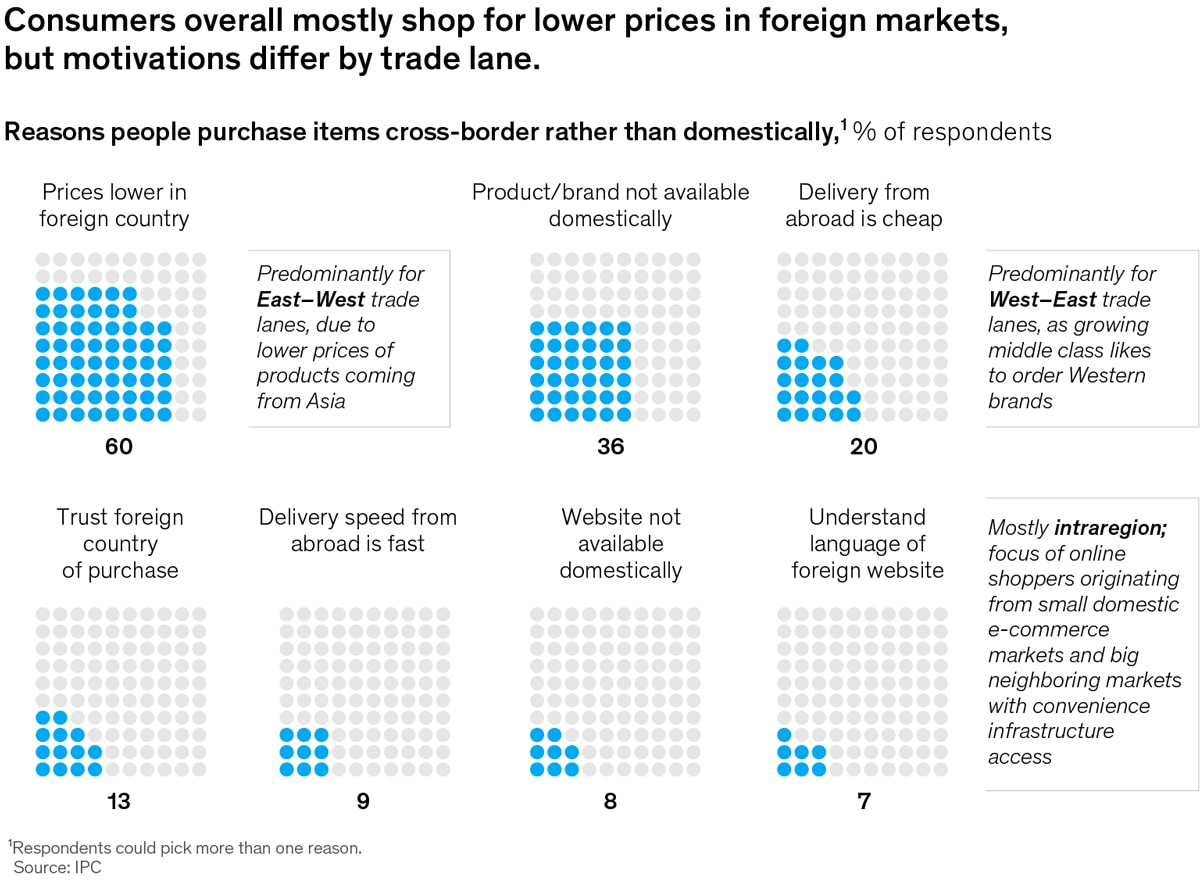
See more 



This week’s other select charts Arrivals and departures Flights of fancy delivery An app a day? Innovation ain’t easy 

Follow our thinking 



Share these insights Did you enjoy this newsletter? Forward it to colleagues and friends so they can subscribe too.
Was this issue forwarded to you? Sign up for it and sample our 40+ other free email subscriptions here.This email contains information about McKinsey’s research, insights, services, or events. By opening our emails or clicking on links, you agree to our use of cookies and web tracking technology. For more information on how we use and protect your information, please review our privacy policy. You received this email because you subscribed to The Week in Charts newsletter. Manage subscriptions | Unsubscribe Copyright © 2022 | McKinsey & Company, 3 World Trade Center, 175 Greenwich Street, New York, NY 10007
by "McKinsey Week in Charts" <publishing@email.mckinsey.com> - 03:28 - 9 Apr 2022 -
La guerra en Ucrania y navegar por un futuro incierto
McKinsey&Company
Además, cómo lograr una vida de mayor calidad .
Comparte este email 



Destacados del mes, Abril de 2022 La invasión rusa de Ucrania está provocando la mayor crisis humanitaria en Europa desde la Segunda Guerra Mundial: se han perdido miles de vidas y se han interrumpido millones de medios de subsistencia. Este mes, nuestras historias destacadas ofrecen un marco inicial de los desafíos causados por la guerra, una perspectiva de las disrupciones a corto y mediano plazo, y escenarios para el impacto potencial en los medios de subsistencia en la eurozona. Otros temas destacados en el número de este mes son: - Cómo la humanidad podría añadir hasta 45,000 millones de años adicionales de vida de mayor calidad durante la próxima década
- Los empleados que dejaron un trabajo sin tener otro a la mano, quiénes volvieron y por qué, y cómo las empresas pueden empezar a reincorporar a más trabajadores
- Diez cosas que el mundo ha aprendido en el transcurso de la pandemia
La selección de nuestros editores 

La guerra en Ucrania: Vidas y medios de subsistencia perdidos e interrumpidos La invasión ha sacudido a todo el mundo. Repasamos las disrupciones y estimamos sus efectos. Comprenda las implicaciones 




LOS DESTACADOS DE ESTE MES 
El creciente saldo de la guerra en Ucrania Vidas perdidas y trastornadas. ¿Qué impacto tendrá la guerra en Ucrania en el flujo de energía, los precios de los alimentos y la energía, la disrupción de la cadena de suministro y, fundamentalmente, el contrato social global? Comprenda la crisis 

¿Se han ido por ahora o para siempre? Cómo jugar el juego de los nuevos talentos y recuperar a los trabajadores Casi la mitad de los empleados que abandonaron voluntariamente la fuerza laboral estadounidense durante la pandemia no van a volver por su cuenta. Los empleadores deben ir a buscarlos. He aquí cómo empezar. Conozca las prioridades de los empleados 

Diez lecciones de los dos primeros años de la COVID-19 En el segundo aniversario de la pandemia, hacemos un balance. Mire hacia atrás 
El Internet de las Cosas llega a la mayoría de edad Estudios de McKinsey muestran que la adopción de las tecnologías del Internet de las Cosas ha aumentado exponencialmente en los últimos cinco años, pero la implementación satisfactoria sigue eludiendo a algunos. He aquí cómo hacerlo bien. Conecte los mundos físico y digital 

Cómo pueden responder las empresas a las alzas de precios: Una guía para CEOs Las empresas necesitan mejores herramientas para hacer frente al alza de precios. Los directores generales pueden buscarlas en sus operaciones de negocios. Comprenda la inflación 

Reseña anual de mercados privados de McKinsey Actualizado anualmente, nuestro Informe Global de Mercados Privados ofrece lo mejor de nuestra investigación y visión sobre el capital privado, el sector inmobiliario, la deuda, las infraestructuras y los recursos naturales. Explore las conclusiones de nuestro informe más reciente y consulte los informes de años anteriores. Lea el reporte 
De nuestro nuevo blog de McKinsey 

McKinsey adquiere el equipo de LOBO, una agencia líder en marketing digital en América Latina Nuestra primera adquisición en LatAm le da la bienvenida al equipo completo de una agencia con sede en Buenos Aires y fortalece aún más nuestras capacidades de comercio digital en las Américas. Crear impacto 

Nuevo Libro 

Reimaginando Perú 23 líderes comparten visiones de un Perú más próspero, unido y sostenible, y las rutas que podemos construir juntos para hacerlas realidad. Escuche de los expertos 
Esperamos que disfrute de los artículos en español que seleccionamos este mes y lo invitamos a explorar también los siguientes artículos en inglés. 
ALSO NEW Reimagining HR: Insights from people leaders Author Talks: Attributes—not skills—determine whether you ‘cut it’ or not Six customer experience pitfalls to avoid The $773 billion question: Inflation’s impact on defense spending From risk management to strategic resilience Here comes the 21st century’s first big investment wave. Is your capital strategy ready? Repairing the broken rung on the career ladder for women in technical roles Author Talks: How to handle your work jerk The five zeros reshaping stores Building next-generation B2B sales capabilities The role of the board in preparing for extraordinary risk 
SPECIAL FEATURES 
The Next Normal McKinsey experts and industry executives envision the space industry’s next decade. Understand the future of space 

McKinsey on Books Explore this month’s best-selling business books, prepared exclusively by NPD BookScan. See the lists 
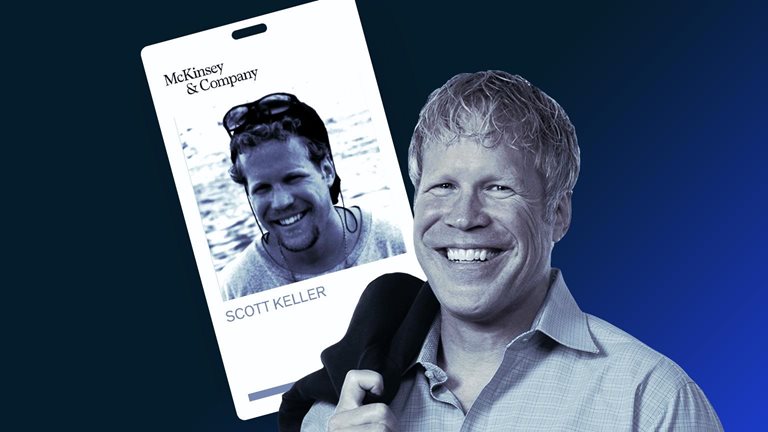
My Rookie Moment McKinsey senior colleagues discuss what inspired them to leap into authorship. Watch episode 7 
McKinsey for Kids This interactive series tells stories about our work to help you understand what McKinsey does and why it matters, whether you’re 16 or 64. Get smart 

McKinsey Classics Economic growth is fueled by an expanding pool of workers and their rising productivity. Read “A productivity perspective on the future of growth.” Rewind 

Mind the Gap Read a sample of Mind the Gap and sign up for it or any of our more than 40 free email subscriptions. Subscribe — Curated by Eleni Kostopoulos, a digital publishing manager in McKinsey’s New York office 

Follow our thinking 


McKinsey Insights - Get our latest
thinking on your iPhone, iPad, or Android


Comparta estas ideas ¿Disfrutaste este boletín? Reenvíelo a colegas y amigos para que ellos también puedan suscribirse.
¿Se le remitió este articulo? Regístrese y pruebe nuestras más de 40 suscripciones gratuitas por correo electrónico aquí.Este correo electrónico contiene información sobre la investigación , los conocimientos, los servicios o los eventos de McKinsey. Al abrir nuestros correos electrónicos o hacer clic en los enlaces, acepta nuestro uso de cookies y tecnología de seguimiento web. Para obtener más información sobre cómo usamos y protegemos su información, consulte nuestra política de privacidad. Recibió este correo electrónico porque es un miembro registrado de nuestro boletín informativo Destacados. Manejar suscripciones | Cancelar Copyright © 2022 | McKinsey & Company, 3 World Trade Center, 175 Greenwich Street, New York, NY 10007
by "Destacados de McKinsey" <publishing@email.mckinsey.com> - 08:22 - 9 Apr 2022 -
The latest fashion trend is pixelated
the Daily read
Discover digital landscapes .
Share this email 



AN ARTICLE A DAY, PICKED BY OUR EDITORS 
Why is Gucci getting into gaming? For the same reason Louis Vuitton, Ralph Lauren, and other high fashion brands are linking up with the $176 billion industry. Shoppers—especially those in Gen Z—are spending more time than ever before in virtual spaces, or “second worlds.” Fashion companies have only just begun leveraging the immersive power of the metaverse, to promising results. Gucci took to the popular online platform Roblox to replicate its famous Gucci Garden, drawing 19 million visitors to the installment, and Louis Vuitton launched an NFT videogame for its 200th anniversary. But that’s not all—check out a new McKinsey photo feature to learn how virtual runways, avatar “skins,” and more metaverse technology stand to revolutionize the state of fashion. — Molly Liebergall, digital editor, New York 
How the fashion industry can get into a metaverse mindset Shoppers, particularly those in Gen Z, are spending more time online and exploring the possibilities of the metaverse. Here’s what fashion and luxury players need to know about this emerging frontier. Discover digital landscapes 

Quote of the Day “I would hope that for the health of the organizations, they would take it as an opportunity to reset the nature of the exchange and not make it so transactional and actually be thoughtful. I view it as an opportunity more than anything. Let’s reset the nature of our exchange. It’s not just an employer writing an employee a check. It’s actually a partnership.” —Bill Schaninger, McKinsey senior partner, on the shifts in employee agency in a new episode of the McKinsey Talks Talent podcast 
Chart of the Day 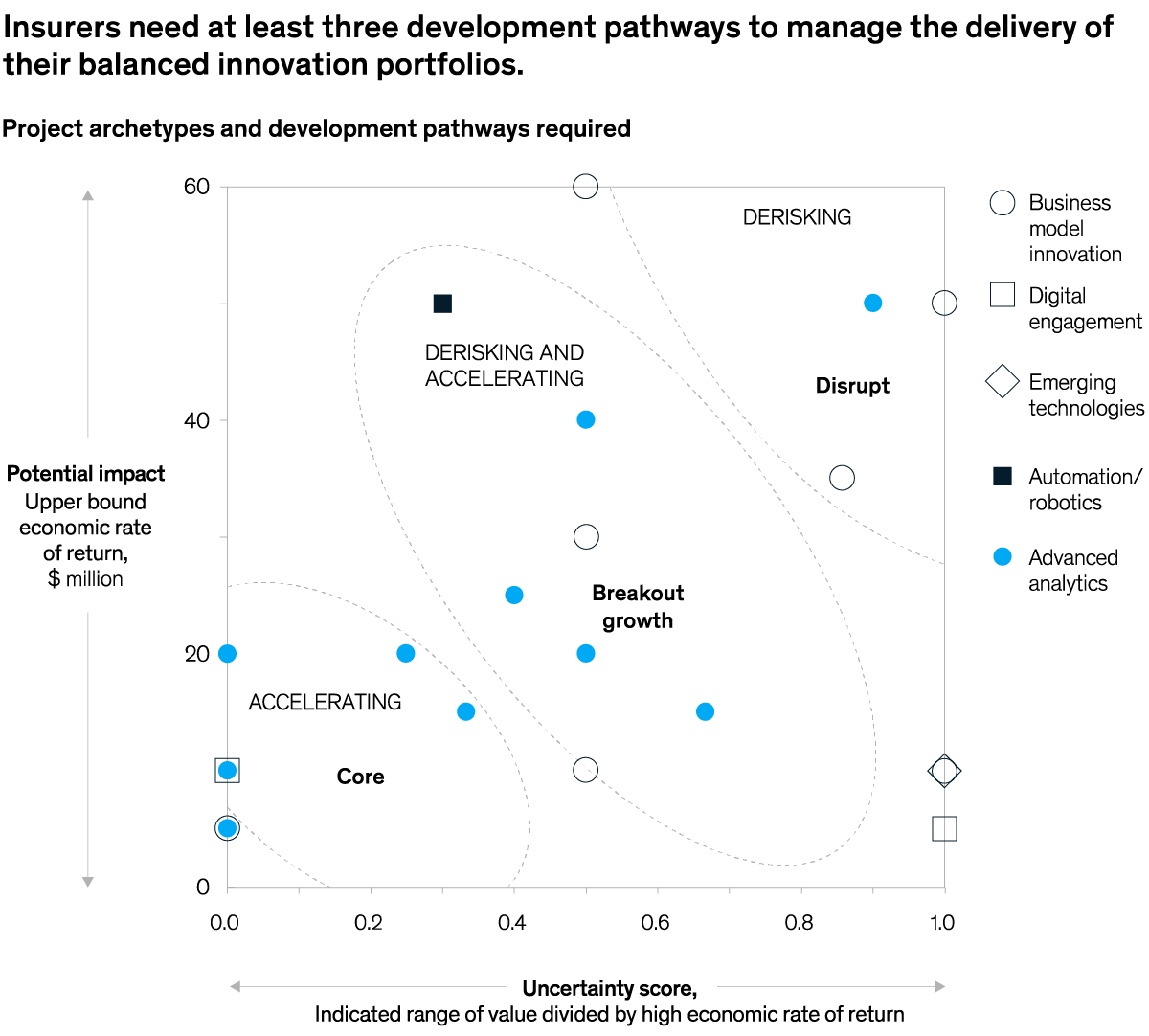
See today’s chart 
Also New 

Author Talks: Why shouldn’t we all just get along? Populace cofounder Todd Rose explains how conformity biases and our individual desires to fit in with the group can lead us all down the wrong path. Speak your mind 


Patients struggle with unmet basic needs: Medical providers can help Addressing unmet basic needs can have a positive impact on health access and outcomes. Here are some best practices for providers. Address the gaps 


McKinsey for Kids: Game on! Why your computer learns faster and games better than you think Computers can solve some problems better and faster than humans can—but only after humans train the machines to use artificial intelligence. Let’s explore the world of gaming to figure out how. Think like your technology 


Follow our thinking 



Share these insights Did you enjoy this newsletter? Forward it to colleagues and friends so they can subscribe too.
Was this issue forwarded to you? Sign up for it and sample our 40+ other free email subscriptions here.This email contains information about McKinsey’s research, insights, services, or events. By opening our emails or clicking on links, you agree to our use of cookies and web tracking technology. For more information on how we use and protect your information, please review our privacy policy. You received this email because you subscribed to the Daily Read newsletter. Manage subscriptions | Unsubscribe Copyright © 2022 | McKinsey & Company, 3 World Trade Center, 175 Greenwich Street, New York, NY 10007
by "McKinsey Daily Read" <publishing@email.mckinsey.com> - 06:42 - 8 Apr 2022 -
Is your workplace ‘sticky’? If not, it’s time to start listening more to your employees.
The Shortlist
Plus, the five zeros reshaping retail .
Share this email 



Our best ideas, quick and curated | April 8, 2022 View in browser 
This week, we look at measures companies can take to keep employees from walking out the door. Plus, how organizations can get the Internet of Things right, and a McKinsey talent expert on why a 20-hour workweek isn’t as far-fetched as it sounds. 
Gone for now, or gone for good? Workers are leaving companies faster than they can be replaced. Nearly half of the employees who voluntarily left the US workforce during the pandemic aren’t coming back on their own. In a recent McKinsey survey of almost 600 US workers who voluntarily left a job without another in hand, 44 percent said that they have little to no interest in returning to traditional jobs in the next six months. Most companies understand that they can’t just sit and wait for workers to reappear on their doorstep. Employers must go and get them. But how? A break with traditional roles. The first step is to understand that this recent wave of attrition is different. Instead of leaving for a similar but better job elsewhere, most workers are leaving to take on very different roles—or just leaving the workforce entirely. That push into nontraditional jobs or not working at all means compensation and benefits packages aren’t the sole answer. Instead, workers also want more flexibility, community, and an inclusive culture if they’re going to accept a full-time job at a traditional employer. Make some ‘sticky’ moves. To thrive in this new moment, companies must build “sticky” workplaces by listening to employees, anticipating and addressing their concerns, fostering psychological safety and a sense of community, and measuring outcomes. Organizations can ask people in the most critical roles how they are doing and what they need to continue to grow. They can introduce new types of scheduling, staffing, and hiring innovations—for instance, by allowing people to assemble their own teams for projects rather than assigning them to ready-made squads. Or they can let job candidates test out roles for a limited period. These moves might also attract nontraditional workers, including students, “boomerang” employees (those who return to a company after leaving), and others currently doing part-time work or leading their own start-ups. Retain your talent pool. Companies have to ask the right questions to understand how to retain their talent (something that HR leaders have always focused on but have done so intensively throughout the COVID-19 pandemic). A good people analytics function can round out the big picture with facts about individuals and cohorts. It can “separate the signal from the noise,” noted HR expert David Green in a recent McKinsey Talks Talent podcast. “It can help organizations understand if they actually have a problem with attrition and, if so, where, what job families, what locations? Is it people who have been tenured for a certain time? Is it certain groups?” From there, it’s easier to tailor solutions. The bottom line. Individuals may be looking for a certain range of pay when considering a job offer. But once that threshold has been met, cultural factors can make a company more attractive to join and, ideally, provide more incentive to stay. Focusing only on compensation or only on cultural factors won’t stem the tide of attrition—business leaders must pay constant attention to both. 
OFF THE CHARTS Building a clean-fuels infrastructure To help enable a decarbonized energy system in the US, gas utilities will need a different system architecture. Those utilities with experience in pipeline development and maintenance may be well positioned to build and own the required assets. A clean-fuels system could present opportunities for other players as well, such as those that have experience in energy infrastructure development. 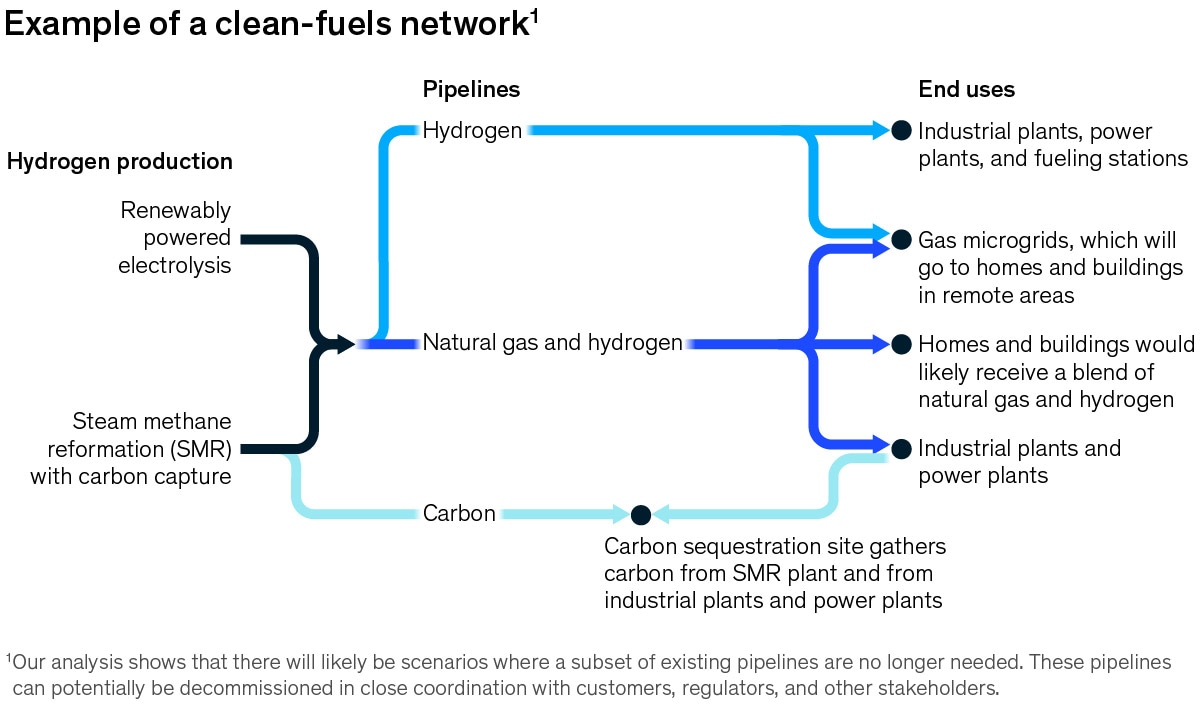
Check out our chart of the day here. 

PODCAST The Internet of Things … and many more things In this episode of The McKinsey Podcast, partners Michael Chui and Mark Collins discuss the findings of McKinsey’s latest Internet of Things report, including how the IoT has spread far beyond the digital-enabled household. “Whether it’s in the factory, in healthcare, or in the automotive industry, we’re seeing more and more cases where real value is growing and being created,” said Chui. Still, the successful integration of IoT continues to elude some companies. Here’s how to get IoT right. 
MORE ON MCKINSEY.COM The five zeros reshaping retail | The margins for error in retailing are shrinking toward zero in five areas: shopping channels, customer assistance, delivery times, equity and sustainability, and talent. Here are ways retailers can innovate to meet customers where they are. Germany’s e-health transformation makes uneven progress | Our eHealth Monitor 2021 report shows solid uptakes of telemedicine and consumer health apps. But e-prescriptions, health data exchange, and patient use of electronic health records are lagging behind. Responsible product management: The critical tech challenge | In recent years, societal concerns about privacy, sustainability, and inclusion have increased. The cross-functional, lynchpin role of product managers makes them particularly well positioned to navigate these complex issues. 
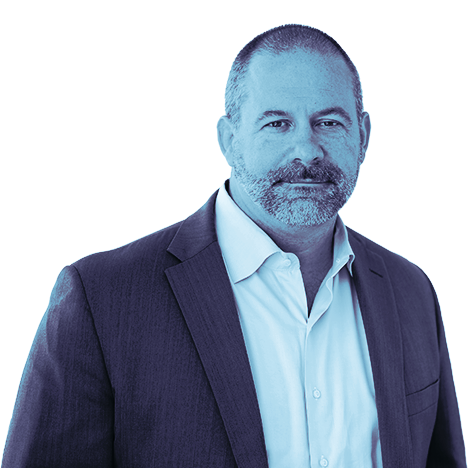
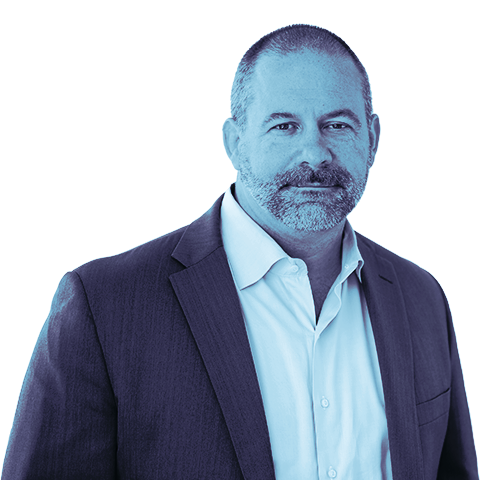
WHAT WE’RE THINKING Bill Schaninger on shrinking the workweek Bill Schaninger, a senior partner in McKinsey’s Philadelphia office, designs and manages large-scale organizational transformations. He has written extensively on how organizations can create world-class talent systems and winning workforce dynamics. A lot of people are talking about moving to a four-day workweek, but I think it’s more revealing to talk about a 20-hour workweek. For people who want flexibility, 20 hours a week is a really manageable number. It’s particularly good for young people, who want a solid gig but also value the side hustle that helps them find their purpose. And it’s excellent for older people who have recently retired. A huge part of their social life may well have been tied up with work. They might like to continue collaborating with peers, colleagues, and friends. And the work benefits may be better than what they’d get as retirees. This should be a win–win. If a company could get access to loyal—not transactional—people who are excited to be at work, why wouldn’t it want that? However, most companies don’t want to deviate from what they consider “normal”—a five-day, 40-hour workweek. (Which in the US, at least, is an artificial creation enshrined by laws passed more than 80 years ago.) Employers think anything else would be too complicated. But if they really examined what their talent force looks like, they’d see it’s quite complex already, full of “full timers” with special arrangements, contractors deeply entwined with the company, freelancers who were once full-timers, and so on. Another big convention that most employers don’t want to alter is offering benefits only to people working a standard 40-hour week. But perhaps that’s shortsighted. By lowering the bar to 20-hour weeks, they probably create a more reliable workforce, full of people who know the company and its culture and who are committed to it, because the company is helping them have a happier, more flexible life. One outcome of the pandemic is that the employee–employer power dynamic has really shifted toward employees. Offering flexibility with benefits would go a long way to showing talent that employers are truly invested in you. Research clarifies that benefits are an even bigger “tie that binds” than hourly wages. Now, 20 hours isn’t some magical number. My beef with the five-day workweek is that it’s a norm from long ago that hasn’t been adjusted to reflect the way that work has evolved. Like many proposals for four-day workweeks, it’s a mandate handed down from on high. So, maybe 25 hours is right, or maybe 30—even though that seems too high to me. The point is that affording employees this kind of flexibility would be both an honest recognition of today’s talent market and a way for companies to build lasting loyalty from employees—at a time when loyalty to corporations is at a low. When it comes to having to go into an office every day of the week, the genie is out of the bottle. When we next hit a downturn in the economy, some employers will be tempted to think, “Now is our chance to get back to everyone in the office every day.” If that happens, you’ll see a bifurcation between those companies and more flexible firms. And I think those companies will be hurt because people no longer accept the idea that a company owns them. They think they deserve choice, and they’re not going to relinquish that easily. They’re going to get on social media and talk about their employers, and there’s going to be a cost to that. But companies that are less entrenched in tradition and that offer workers real flexibility are going to create a workplace that’s compelling. At those companies, people will enjoy the feeling of going into the office. I think there’s a good chance that within five years, employers offering 20-hour workweeks with benefits will become more of a norm. For the past two years-plus, employees have made their independence clearer than ever. It’s time for employers to acknowledge that reality and adjust their policies and expectations. — Edited by Barbara Tierney Share this What We’re Thinking 



BACKTALK Have feedback or other ideas? We’d love to hear from you. 
Tell us what you think 

Follow our thinking 



Share these insights Did you enjoy this newsletter? Forward it to colleagues and friends so they can subscribe too.
Was this issue forwarded to you? Sign up for it and sample our 40+ other free email subscriptions here.This email contains information about McKinsey’s research, insights, services, or events. By opening our emails or clicking on links, you agree to our use of cookies and web tracking technology. For more information on how we use and protect your information, please review our privacy policy. You received this email because you subscribed to The Shortlist newsletter. Manage subscriptions | Unsubscribe Copyright © 2022 | McKinsey & Company, 3 World Trade Center, 175 Greenwich Street, New York, NY 10007
by "McKinsey Shortlist" <publishing@email.mckinsey.com> - 02:27 - 8 Apr 2022 -
Where will the opportunities be in the future space economy?
McKinsey&Company
Satellites, space junk, and staffing .

The future of space In the news • Talent search. The space industry’s toughest challenge is a shortage of talent to execute its lofty goals, top executives shared at a recent satellite conference. Leaders said that until space companies can attract more diverse talent, they will have to keep competing for the same people. One COO noted the problem of inflated salaries. “How can we all afford all of these people?” mused the executive. Others shared that the allure of “cooler tech” in other fields, along with the COVID-19 pandemic, were obstacles to recruitment. [Space News] • Saving satellites. Most of the satellites now orbiting the Earth will turn into space junk once they break. That’s because—outside of sending astronauts to do the work—there’s no way to routinely refuel or repair those satellites. But human spaceflight is costly, so the public and private sectors are turning to robots to manage the tasks. Researchers are developing robots with mechanical arms that can service satellites from high above the planet. These efforts could enable companies to produce better and more affordable satellites. [Smithsonian] 
“There are a number of new fellowships designed to help make the aerospace industry a more diverse and dynamic environment, and the individuals who become alumni of these fellowships are going to change the world.” 
On McKinsey.com • Building trust. Companies hoping to succeed in the future space industry will need to build trust alongside the proper technologies, says Airbus U.S.’s Debra Facktor in an interview with McKinsey. Thousands of additional satellites will be circling the Earth in 2030, making it likely that servicing them in orbit will be a new opportunity. “Today, if your car breaks down on the side of the road at midnight, you can call a service you trust,” says Facktor. “The same thing can happen in space.” • Artists in space. Making the space economy work will take all kinds of people. Along with math, science, and technical talent, we will also need people who communicate well, people who can draw up contracts, experts in political science and in the arts, says Facktor. “The space sector needs to invest in talent and encourage young people—especially women and underrepresented minorities—to go into fields like aerospace.” Read the full interview for how government and industry leaders can develop the space economy, plus the biggest ways that companies can stand out. — Edited by Belinda Yu Go beyond 
Was this forwarded to you? Sign up here. Or send us feedback — we’d love to hear from you. 

Follow our thinking 


This email contains information about McKinsey’s research, insights, services, or events. By opening our emails or clicking on links, you agree to our use of cookies and web tracking technology. For more information on how we use and protect your information, please review our privacy policy. You received this email because you subscribed to the On Point newsletter. Manage subscriptions | Unsubscribe Copyright © 2022 | McKinsey & Company, 3 World Trade Center, 175 Greenwich Street, New York, NY 10007
by "McKinsey On Point" <publishing@email.mckinsey.com> - 12:29 - 8 Apr 2022 -
Adapting to the new world of advertising without cookies
the Daily read
Prepare for the new reality .
Share this email 



AN ARTICLE A DAY, PICKED BY OUR EDITORS 
For decades, web-based cookies and other personal identifiers enabled advertisers to track online activity and develop targeted ads. But now, with increased pressures for privacy protection and regulation, third-party cookies are being phased out. What does this mean for advertisers and brands? A new article lists out three strategies to help companies confront this new reality while ensuring the privacy of its users. Get smart on how your brand can gain advantage in this quickly evolving business landscape. — Joyce Yoo, digital editor, New York 
As the cookie crumbles, three strategies for advertisers to thrive Here is how brands can adapt their online advertising to compete in a dramatically changing landscape. Prepare for the new reality 

Quote of the Day “We’ve all had those moments where we think we’re the only one in the room—whether at work, or with friends, or whatever—that holds a view. Rather than speak up, we say nothing, and we’re not alone. Research shows that nearly two-thirds of all Americans admit to this kind of self-silencing.” —Todd Rose, cofounder and president of Populace, on collective illusions in a new Author Talks interview 
Chart of the Day 
See today’s chart 
Also New 

Is worker power on the rise? Quitting is up, and so are wages. As the Great Attrition persists, employer–employee dynamics appear to be changing. But who actually benefits—and how durably? Understand the moment 


How distributors can self-disrupt to win in the new digital world Distributors can learn new strategies to make them effective in a world with increasingly powerful digital players. Consider four categories 


Closing the loop: Increasing fashion circularity in California The fashion value chain is predominantly linear and global. It has put the apparel industry on an unsustainable path. Reprioritize recycling 


Follow our thinking 



Share these insights Did you enjoy this newsletter? Forward it to colleagues and friends so they can subscribe too.
Was this issue forwarded to you? Sign up for it and sample our 40+ other free email subscriptions here.This email contains information about McKinsey’s research, insights, services, or events. By opening our emails or clicking on links, you agree to our use of cookies and web tracking technology. For more information on how we use and protect your information, please review our privacy policy. You received this email because you subscribed to the Daily Read newsletter. Manage subscriptions | Unsubscribe Copyright © 2022 | McKinsey & Company, 3 World Trade Center, 175 Greenwich Street, New York, NY 10007
by "McKinsey Daily Read" <publishing@email.mckinsey.com> - 06:38 - 7 Apr 2022 -
Déboguez plus rapidement et profitez davantage de la vie.
Plan, review, and debug code from your IDE.Réparez les erreurs sans perdre votre rythmeVous aimez programmer ? Vous l'aimerez encore plus lorsque vous réparerez les erreurs sans interrompre votre concentration ni quitter votre IDE.Découvrez les erreurs dans votre IDE. Regardez la démo.- Soyez plus productif sans changer de rythme
- Développez un meilleur backlog dans Errors Inbox
- Regroupez les problèmes dans votre IDE pour les déboguer avec CodeStream
- Résolvez les incidents rapidement, éliminez la dette technique
- Passez plus de temps à développer d'excellents logiciels
New Relic
31-36 Golden Ln, Dublin 8, D08 A5RV, Ireland | +353 (01) 687 6808 | newrelic.comThis email was sent to info@learn.odoo.com as a result of subscribing or providing consent to receive marketing communications from New Relic.
You can tailor your email preferences at any time here.Send to a Friend · Unsubscribe · View this online · Privacy Policy
© 2008-21 New Relic, Inc. All rights reserved
by "New Relic EMEA" <emeamarketing@newrelic.com> - 04:31 - 7 Apr 2022 -
Is your pink shirt ready for next Wednesday?
Intersection Subject Line
Creating a world where LGBTQ+ youth are celebrated .
Share this email 



DELIVERING ON DIVERSITY, GENDER EQUALITY, AND INCLUSION 
International Day of Pink is around the corner, on Wednesday, April 13. In this issue, we focus on LGBTQ+ youth—books that celebrate them, resources to support them, and LGBTQ+ business leaders who are serving as role models for the next generation. THE VIEW 
“You are worthy of love. A lot of society does not want you to believe that you’re worthy of love, but you are, and if you love yourself in the way that people don’t want you to, if you stop believing the lies that are told … then you will begin to discover a real power.”
— Author Kacen Callender,
sharing a message for young readersKacen Callender is the author of Felix Ever After, a young-adult (YA) novel about a trans teen learning that he deserves love, and the National Book Award–winning King and the Dragonflies, which tells the story of a 12-year-old struggling with grief from the loss of his brother as well as questions about his own sexuality. Growing up in St. Thomas in the Virgin Islands, Callender, who uses they/them and he/him pronouns, faced bullying and a culture of hostility toward LGBTQ+ people that made them feel isolated even before they realized they were queer. The author creates in their books the kind of world they wish they had grown up in: “I write what I wish my life had been.” Whenever they write a book, Callender thinks of today’s LGBTQ+ youth, “the readers who might need a story that lets them know they aren’t alone—that they’re important and valid and perfect and loved, and that we need them to stay with us; that our world wouldn’t be complete without them.” That message is important to adults as well as teens. As fellow author Alex Marzano-Lesnevich, who uses they/them pronouns, explains in their essay “The healing power of queer coming-of-age stories,” YA books offered them “an alternative history, one full of hope for the life I might have lived, and a kind of longing for a world that wasn’t once but might still be.” Like Callender, Marzano-Lesnevich came out as trans in their adulthood and did not have the adolescent experiences depicted in queer YA lit. Books like Felix Ever After, they write, “dare create a world in which trans youths don’t just endure but thrive. They teach us to dream that queer adolescence, and queer lives, need not come with added pain.” These books provide a sense of repair to many LGBTQ+ readers who are long past adolescence, offering a vision of a world that “embraces who we are with joy.” 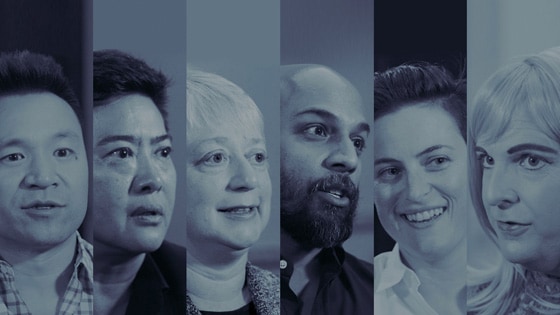
That’s a vision shared by the LGBTQ+ leaders you’ll hear from in “LGBTQ+ voices: Speaking out and looking ahead.” In this McKinsey video feature, six business leaders lay out a vision for better, more inclusive workplaces, where LGBTQ+ people can be their authentic selves, contribute to their full potential, and take their seats at the leadership table. These leaders offer LGBTQ+ youth a vision of their own possible futures. They are out as LGBTQ+ and—even in the face of discrimination—they are thriving. 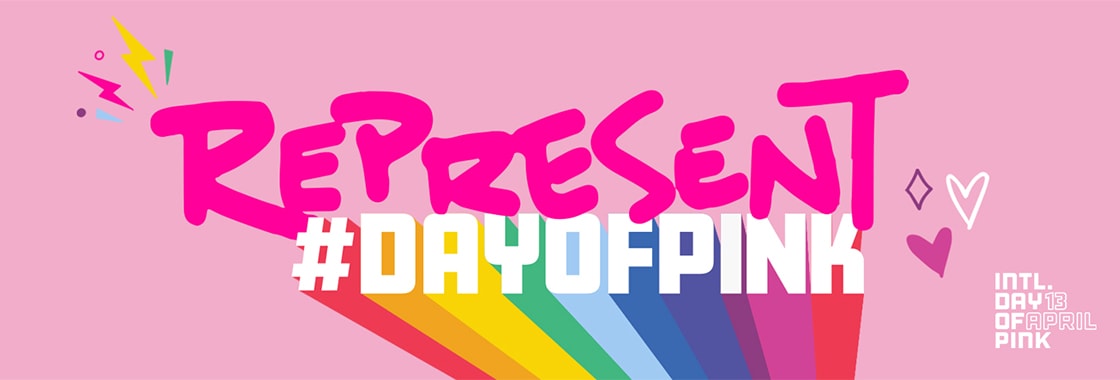
Next Wednesday, on the International Day of Pink, people around the world will wear pink shirts to stand against bullying, discrimination, and violence toward LGBTQ+ people, including those who identify as intersex, asexual, or Two-Spirit. Day of Pink started back in 2007, when hundreds of students at a high school in Canada showed up wearing pink to support a new student who had been bullied for wearing a pink shirt. Now the campaign is international, with events at schools and workplaces. You can signal your support for colleagues—and for LGBTQ+ youth—by wearing pink on Wednesday, April 13, and by learning about and using appropriate terms to discuss gender and sexuality. Plus, from The Trevor Project (a nonprofit that McKinsey supports), here’s A Guide to Being an Ally to Transgender and Nonbinary Youth. — Edited by Julia Arnous, an editor in McKinsey’s Boston office 

Follow our thinking 



Share these insights Did you enjoy this newsletter? Forward it to colleagues and friends so they can subscribe too.
Was this issue forwarded to you? Sign up for it and sample our 40+ other free email subscriptions here.This email contains information about McKinsey’s research, insights, services, or events. By opening our emails or clicking on links, you agree to our use of cookies and web tracking technology. For more information on how we use and protect your information, please review our privacy policy. You received this email because you subscribed to the Intersection newsletter. Manage subscriptions | Unsubscribe Copyright © 2022 | McKinsey & Company, 3 World Trade Center, 175 Greenwich Street, New York, NY 10007
by "McKinsey Intersection" <publishing@email.mckinsey.com> - 02:26 - 7 Apr 2022 -
As war rages in Ukraine, here’s how companies are responding to compounding crises.
McKinsey&Company
See what’s at stake .

The rising toll In the news • A swift response. Years of weighing in on divisive social issues have prepared many corporate leaders to respond quickly and decisively as problems arise. Now, after dealing with the COVID-19 crisis, companies are tackling another global crisis head-on. When the war in Ukraine broke out, hundreds of companies acted fast to protect the lives of their workers and their businesses’ reputations. More than 400 firms with a footprint in Russia have halted or cut back their operations there. [WSJ] • Fading optimism. As the conflict continues in Ukraine, hope is fading for a quick end to the war, the effects of which are being felt worldwide. In Japan, business confidence has fallen for the first time in almost two years, according to the Bank of Japan’s quarterly survey. Business sentiment for the country’s top manufacturers slipped three points between December and March. Meanwhile, a surge of COVID-19 cases in China is intensifying concerns over a potential economic slowdown across Asia. [WaPo] 
“Prices are rising in anticipation of potential shortages. And what will happen is high-income countries will be able to pay, while lower-income countries will have access problems.” 
On McKinsey.com • War and uncertainty. The largest war in Europe in nearly 80 years is a severe humanitarian crisis in a world already grappling with the uncertainty of a protracted pandemic. In addition to the tragedy of lives lost and disrupted in Ukraine, “the energy and food crises are pinching at the livelihoods of people across the world,” says Sven Smit, McKinsey senior partner and chair of the McKinsey Global Institute, in the latest episode of The McKinsey Podcast. Many companies are setting up crisis teams (as they did during the COVID-19 crisis) to understand how the war in Ukraine affects their people and operations. • Months vs years of economic pain. If hostilities are resolved diplomatically in the coming weeks, assuming a modest policy response, we’d be unlikely to experience a stoppage in the supply of energy and some critical materials, says Smit. “In that case, maybe the first or second quarter of this year might look wobbly, and then we might emerge back to some form of normal trajectory.” However, if hostilities are prolonged, with economic sanctions lasting longer and at higher levels, “we could easily be two, three years under,” suggests Smit. — Edited by Belinda Yu Understand the effects of war 
Was this forwarded to you? Sign up here. Or send us feedback — we’d love to hear from you. 

Follow our thinking 


This email contains information about McKinsey’s research, insights, services, or events. By opening our emails or clicking on links, you agree to our use of cookies and web tracking technology. For more information on how we use and protect your information, please review our privacy policy. You received this email because you subscribed to the On Point newsletter. Manage subscriptions | Unsubscribe Copyright © 2022 | McKinsey & Company, 3 World Trade Center, 175 Greenwich Street, New York, NY 10007
by "McKinsey On Point" <publishing@email.mckinsey.com> - 12:22 - 7 Apr 2022
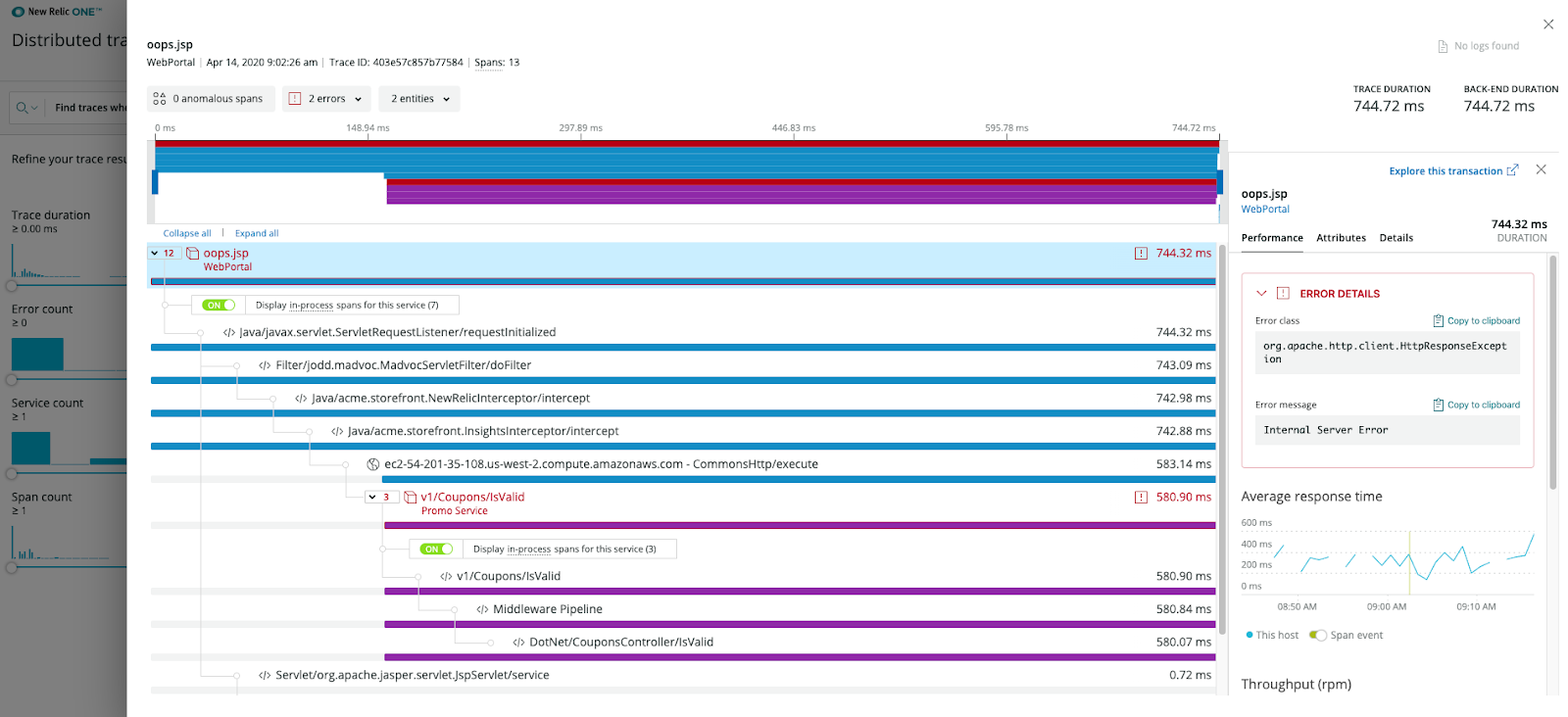



FOLLOW US: